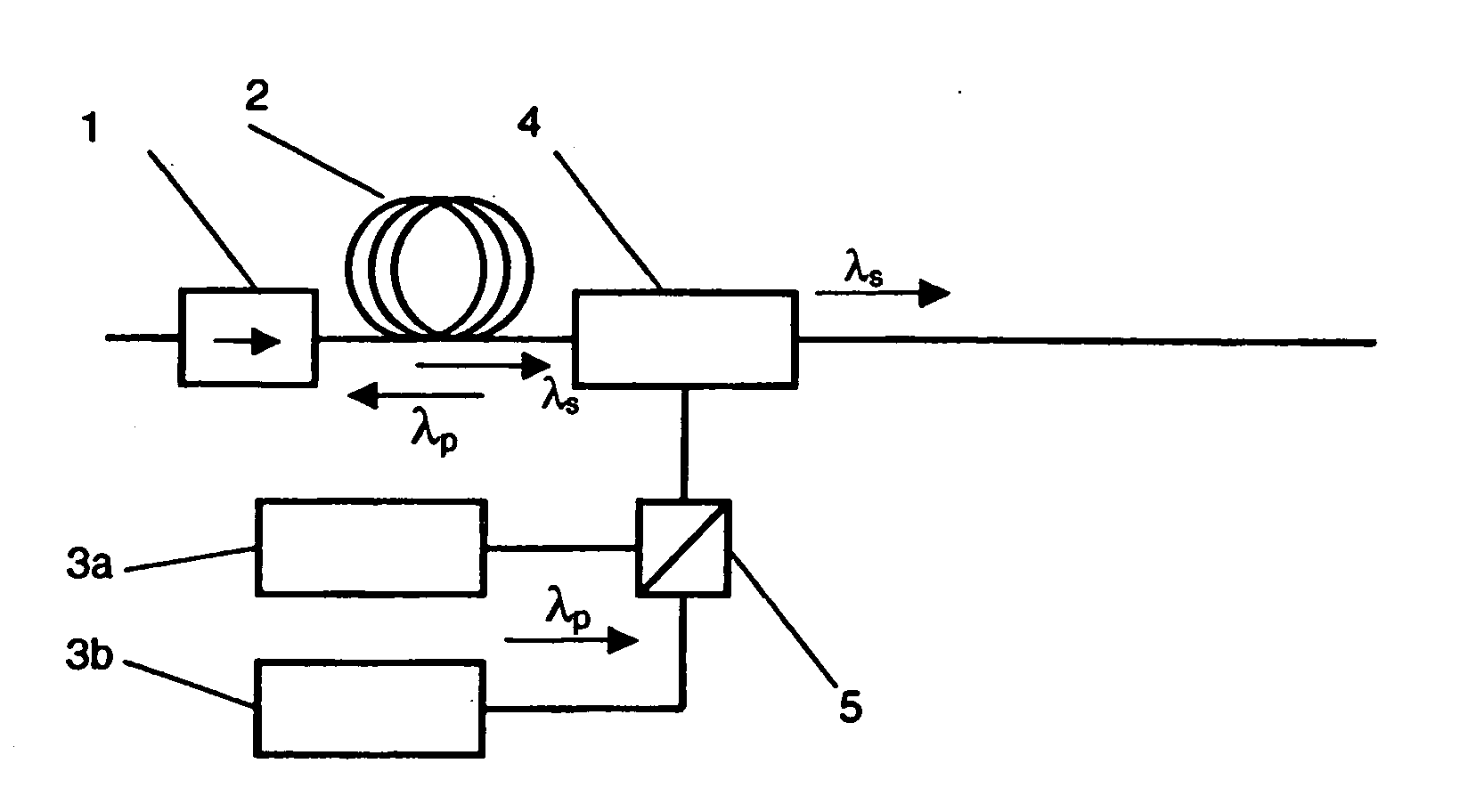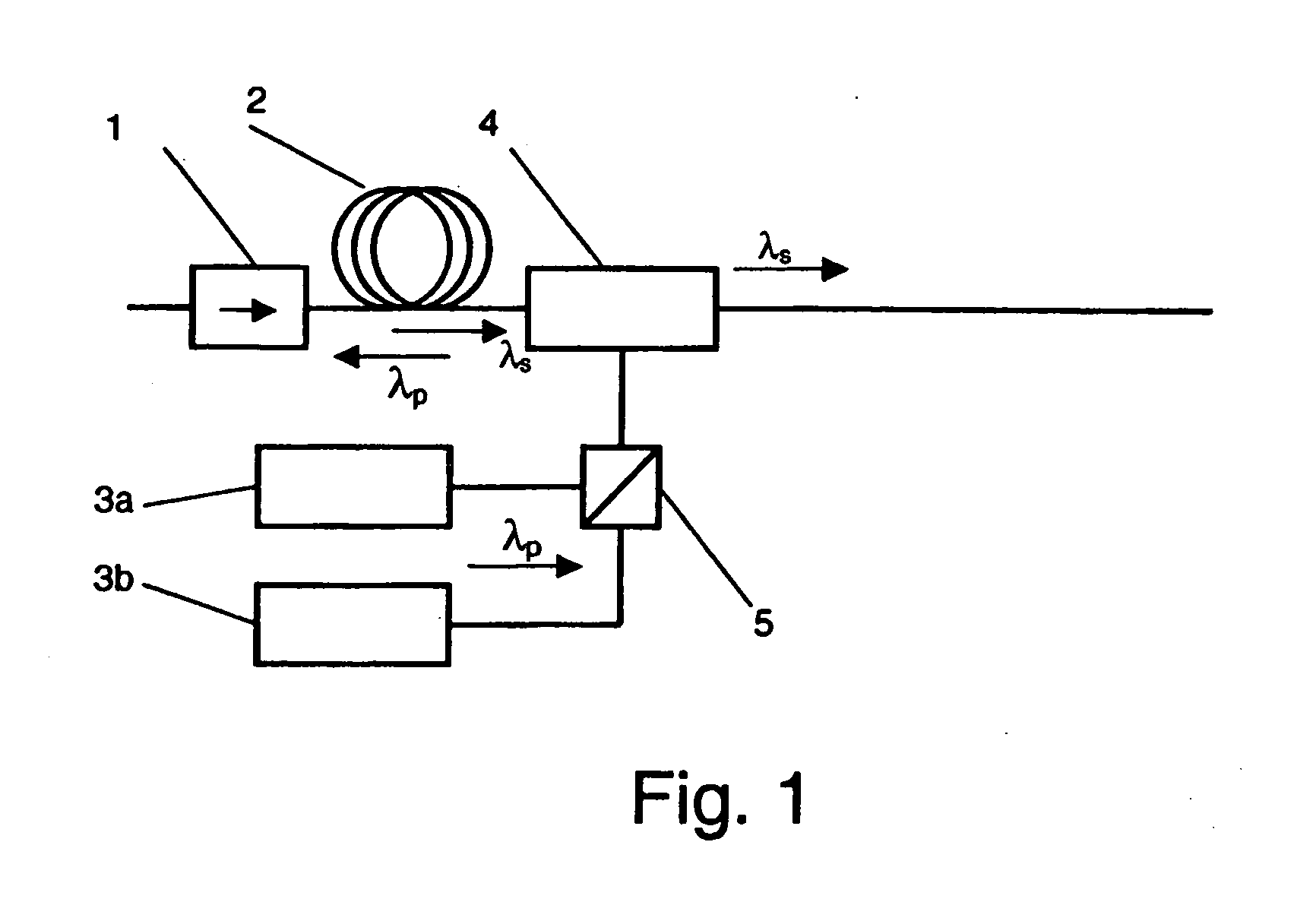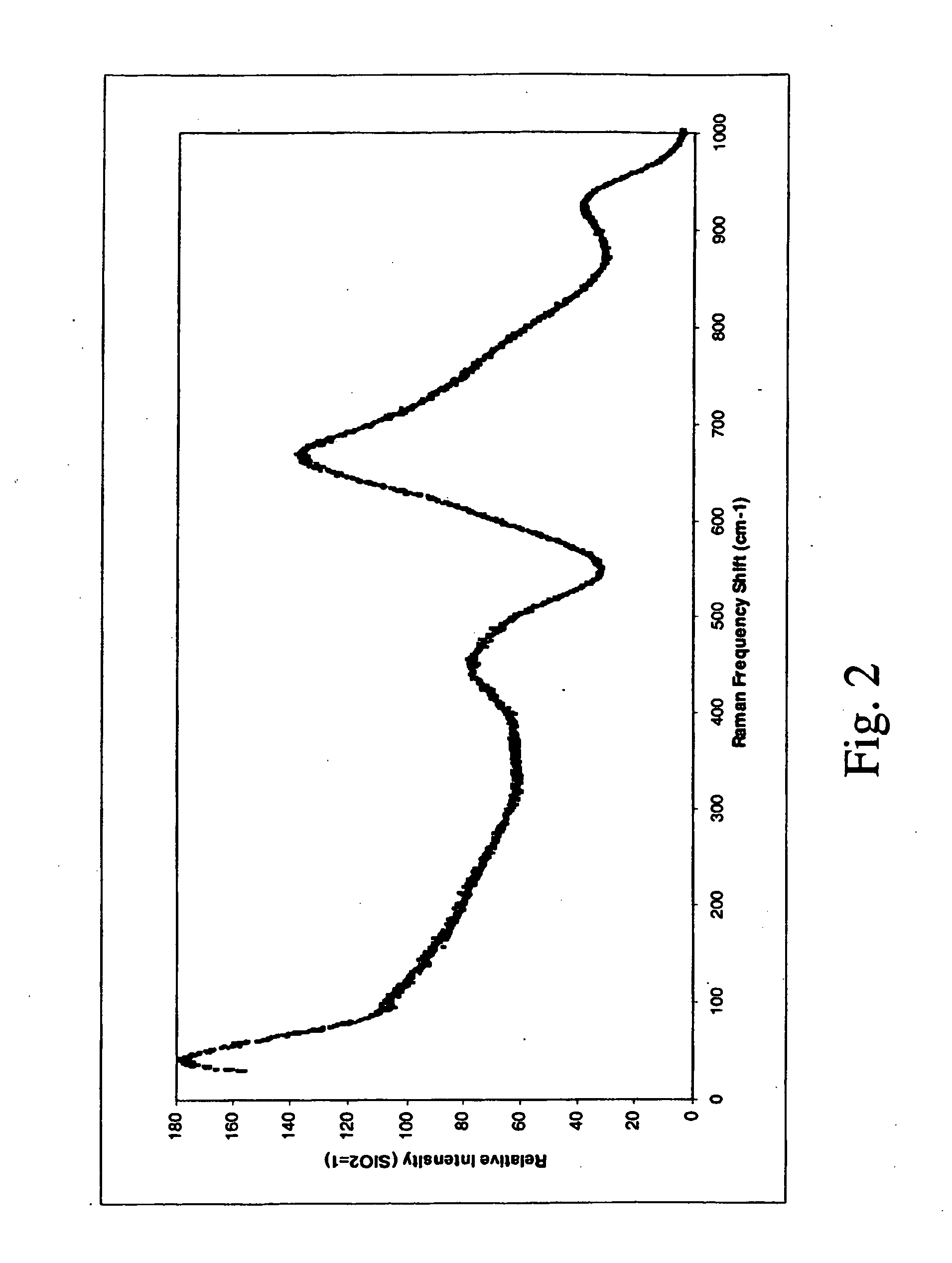Optical fiber for raman amplification
a technology of optical fiber and amplifier, which is applied in the direction of instruments, active medium shape and construction, lasers, etc., can solve the problems of unsatisfactory enhancement of raman gain correlated with these glass compositions, and little work on developing glasses suitable for raman amplification, etc., to achieve good thermal stability of glass, optical or thermal properties of optical fiber, the effect of broad emission bandwidth
- Summary
- Abstract
- Description
- Claims
- Application Information
AI Technical Summary
Benefits of technology
Problems solved by technology
Method used
Image
Examples
example 1
[0095] Preparation of Glass Compositions
[0096] Glass compositions have been prepared by conventional melting techniques, by admixing the raw oxide materials in the prescribed molar amounts and charging the mixture in a Pt / Au crucible. A batch of about 50 g of each composition was melted in an electric furnace at temperature between 750° C. and 950° C. for 2 hours under the atmosphere of O2 / N2. Then the homogeneous melt was casted into a preheated brass mould for forming a glass bulk or perform. The glass was annealed below Tg for 4 hours.
[0097] The following table 1 shows the compositions which have been prepared, where the amount of each oxide is expressed as molar percentage over the total composition.
TABLE 1Glass compositionsTeO2NbO2.5WO3TiO2TN109010TN208020TN307030TW109010TW208020TW307030TT5955TT109010TT158515TNW721810TNT721810
[0098] A comparative glass composition (TZLB) comprising TeO2, ZnO, LiO2 and Bi2O3 in the respective percentage molar amount of 78%, 5%, 12% and 5% ha...
example 2
[0099] Thermal Stability of Glass Compositions
[0100] The above glass compositions have been subjected to DSC analysis, in order to determine the Tg and Tx of each composition, and thus the respective thermal stability index Tx-Tg.
[0101] For each glass composition, three bulk glass samples of around 20 mg were subjected to a DSC characterisation at a heating rate of 10° C. / min in N2 gas atmosphere. The measurement was performed using a DSC series Q10 apparatus (TA Instruments, U.S.A.).
[0102]FIG. 4 shows an example of a DSC plot of the following glass compositions: TNW, TN20 and TW10. The respective Tg and Tx values derivable from said plot, corresponding to the endothermic and to the (first) exothermic peak, respectively, are reported in the following table 2, together with the Tg and Tx values of the other glass compositions manufactured according to example 1. Table 2 further shows the relative Tx-Tg thermal stability index of said glass compositions.
TABLE 2Thermal stabilityTg...
example 3
[0104] Optical Properties of Glass Compositions
[0105] Raman measurements have been performed on polished thin slabs of the above glass compositions of about 1 mm thickness.
[0106] A confocal microscope optics has been used in order to focus well inside the sample, and in order to collect the scattered light from the same region. For this purpose, the same microscope optics were used both for the incident laser beam and for the collection of the Raman scattered light. The measurements have therefore been carried out in a backscattering geometry.
[0107] The Raman scattered light was analysed with a spectrometer and detected by a cooled CCD detector.
[0108] Two different linearly polarized laser sources were used, a frequency doubled Nd:YAG laser operating at 532 nm. As the green light of the 532 nm pump is relatively close to the absorption gap of the tellurite glasses, resonant Raman contribution could appear in the measured Raman spectrum. In order to check these contributions, the...
PUM
| Property | Measurement | Unit |
|---|---|---|
| mole percentage | aaaaa | aaaaa |
| mole percentage | aaaaa | aaaaa |
| mole percentage | aaaaa | aaaaa |
Abstract
Description
Claims
Application Information
 Login to View More
Login to View More - R&D
- Intellectual Property
- Life Sciences
- Materials
- Tech Scout
- Unparalleled Data Quality
- Higher Quality Content
- 60% Fewer Hallucinations
Browse by: Latest US Patents, China's latest patents, Technical Efficacy Thesaurus, Application Domain, Technology Topic, Popular Technical Reports.
© 2025 PatSnap. All rights reserved.Legal|Privacy policy|Modern Slavery Act Transparency Statement|Sitemap|About US| Contact US: help@patsnap.com



